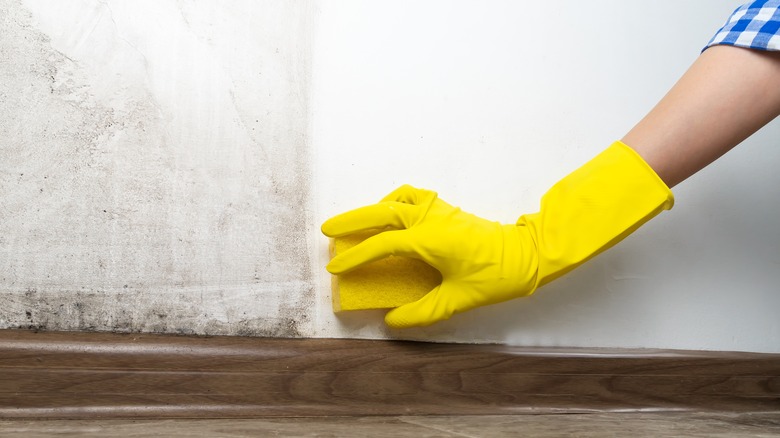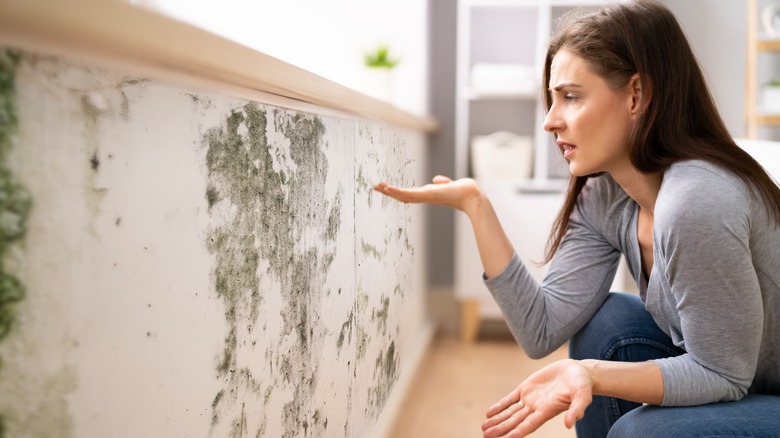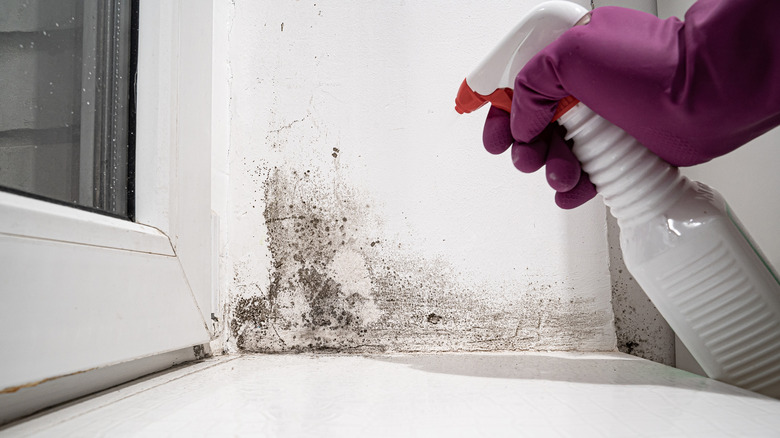The Complicated Cleaning Relationship Between Bleach And Mold
No one enjoys finding mold in their home, and if you do spot some, the immediate response is to make a plan of action to remove any trace. Not only is mold harmful to your family and friends, but it can destroy your drywall materials as well. While many people swear by using bleach to get rid of mold, there is actually a more complicated relationship between the two that you should know before applying this household cleaner. In some circumstances, bleach can get rid of mold, but overall it should not be your go-to. This is because it can actually feed the problem rather than negate it.
There are different schools of thought on cleaning up mold spots or growth with bleach, which can leave you wondering which is the correct answer. Understanding what this household product can do and its effects on mold will help you determine your next move when spotting any nasty mildew.
Should you use bleach on mold?
Bleach is extremely handy when it comes to getting rid of marks and stains, as well as disinfecting surfaces, which is its main job. According to the CDC, bleach can also be used in mold removal by combining 1 gallon of water and 1 cup of cleaner together. However, the EPA notes that using bleach isn't an efficient or suggested way to remove mold and mildew from your home because spores can be left behind despite the strong ingredients in the solution.
One of the biggest reasons bleach can be problematic is due to its makeup: 90% of the mixture is water, which actually feeds mold. If you have fungus growing on an area or material that is particularly porous, like certain woods or drywall, adding bleach will only increase the chances of more mildew spores accumulating over time. Eco Flood and Mold Remediation explain that while the chlorine ingredient dissipates quickly, the water hangs around, giving the spores and roots more to thrive off of.
Alternative ways to get rid of mold
To determine when you can use bleach, it's best to think of the amount of space and the location of the mold coverage. For example, porous materials, as well as areas in your home like the walls or floors, shouldn't be treated with bleach. Instead, use a product like Concrobium, which produces an alkaline atmosphere that molds cannot thrive in. This option is great for pulling the moisture out of mildew and its surrounding areas, giving it no way to survive. It then keeps the space alkalized so further fungus can't reappear.
For bigger outdoor areas, you can apply bleach, but if the mold continues to hold on, you want to discontinue this product in favor of something more lasting. The key piece to remember is that once you've killed mold, it still needs to be scrubbed or removed, as even the leftovers can be harmful and carry bacteria. It can be a process, but it's better to take the time to get rid of mold for good instead of worrying when or if it might come back. The less you rely on bleach for this task, the better, so keep solutions that target mold in your supply cupboards, too.


